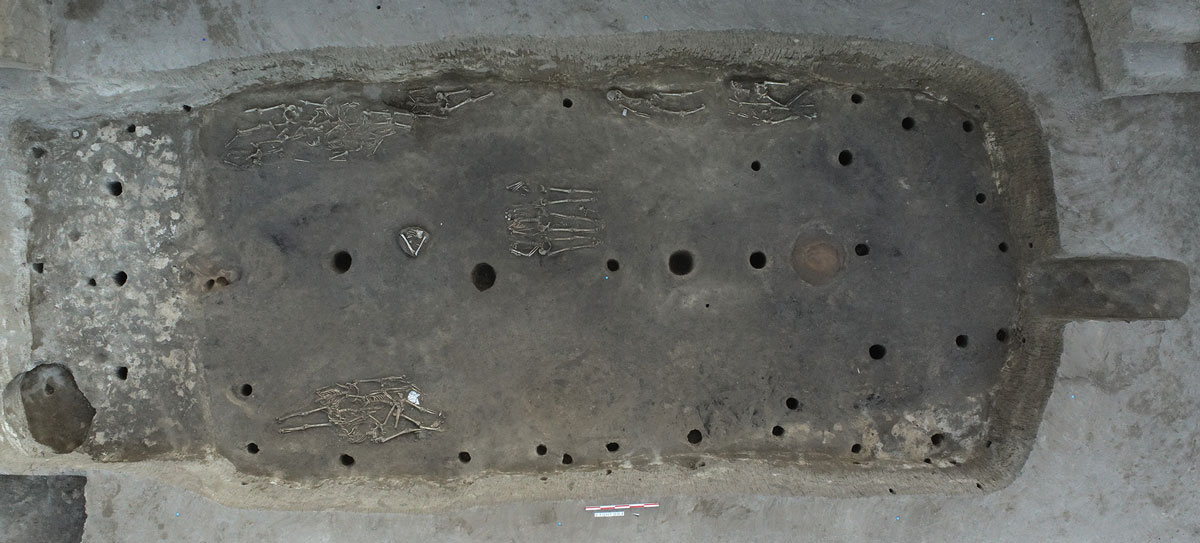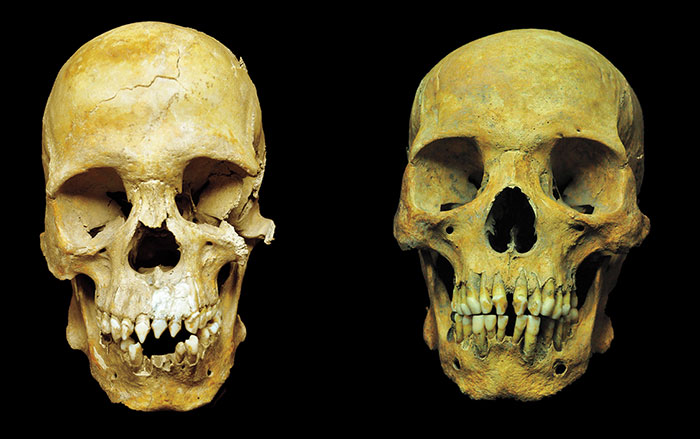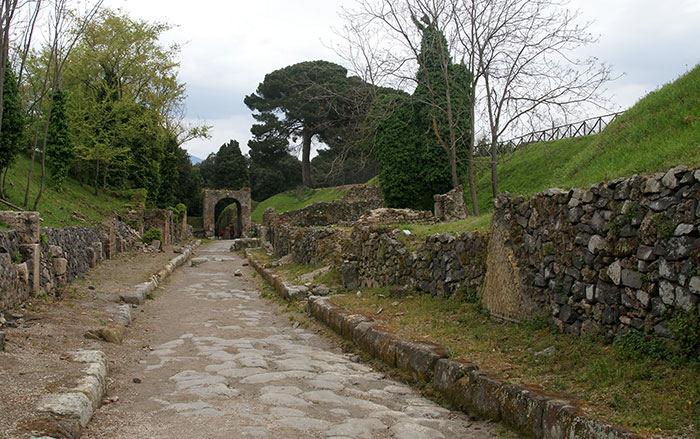NEW HAVEN, CONNECTICUT—The Middletown Press reports that the skeletons of four people discovered in the same grave shaft during construction work in 2011 at the site of Yale New Haven Hospital have been identified as the remains of nineteenth-century Roman Catholic immigrants. The site was home to a church that opened in 1834, but the 600 headstones in the church’s cemetery were removed by 1898. The analysis indicates that the two men and two women ranged in age from 35 to 60. Their bones show signs of heavy labor, and the condition of their teeth indicates they bit down on ceramic pipes to smoke tobacco. “It really brings home vividly the difficulty of life back then,” said former Connecticut state archaeologist Nicholas Bellantoni. “You could see the stress on their bodies—lives were short and painful.” DNA testing suggests three of the people were of Central and Southern European descent, and may have been members of the small Prussian, Polish, German, or Italian populations that lived in New Haven at the time. The fourth body had fractured neck vertebrae. The researchers suggest the remains may have belonged to James McCaffrey, an Irish immigrant who was convicted of murder, hanged, and buried in the church cemetery in 1850. For more on archaeology in Connecticut, go to "Peeping through the Leaves."
Connecticut Skeletons Identified as 19th-Century Immigrants
News September 10, 2019
Recommended Articles
Digs & Discoveries May/June 2024
Hunting Heads

Top 10 Discoveries of 2020 January/February 2021
The First Enslaved Africans in Mexico
Mexico City, Mexico


Digs & Discoveries March/April 2019
Foreign Funeral Rites

-
Features July/August 2019
Place of the Loyal Samurai
On the beaches and in the caves of a small Micronesian island, archaeologists have identified evocative evidence of one of WWII’s most brutal battles
 (Courtesy Neil Price)
(Courtesy Neil Price) -
Letter from England July/August 2019
Building a Road Through History
6,000 years of life on the Cambridgeshire landscape has been revealed by a massive infrastructure project
 (Highways England, courtesy of MOLA Headland Infrastructure)
(Highways England, courtesy of MOLA Headland Infrastructure) -
Artifacts July/August 2019
Bronze Age Beads
 (Courtesy Carlos Odriozola)
(Courtesy Carlos Odriozola) -
Digs & Discoveries July/August 2019
You Say What You Eat
 (Courtesy David Frayer, University of Kansas)
(Courtesy David Frayer, University of Kansas)


